Krakow stands out as one of Poland’s most culturally and politically significant cities. Despite its relatively compact size, Krakow offers a wealth of attractions that showcase its rich history and vibrant culture. The city is a treasure trove of iconic architecture, medieval palaces, and world-class museums. At the heart of this captivating urban landscape lies Main Market Square, a true gem that not only holds the distinction of being Poland’s largest medieval market square at a sprawling 200 square meters but also earns acclaim as one of its most visually stunning. Rynek Gówny (Main Market Square) serves as Krakow’s dynamic social hub, adorned with picturesque pastel-colored townhouses, and dotted with clusters of inviting cafes and restaurants. During the summer months, these establishments spill out onto the charming cobblestone streets, creating an enchanting atmosphere that truly comes alive, especially when illuminated by the city’s vibrant nightlife.
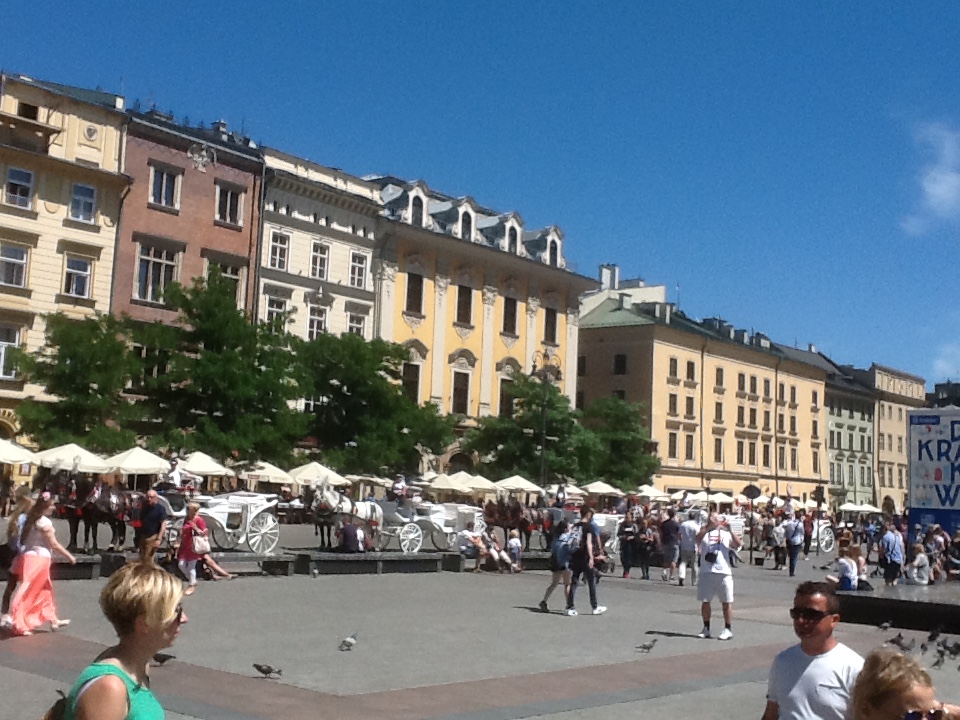
Main Market Square- Krakow New York Jewish Travel Guide
This UNESCO World Heritage Site is a place imbued with rich historical significance and a vibrant atmosphere. It offers a plethora of dining options and is adorned with enchanting horse-drawn carriages that take on a picturesque charm when illuminated after nightfall. It should undoubtedly top your list for horse-and-carriage tours.
And that’s not all—the Rynek is also home to three of Krakow’s most prominent attractions: St. Mary’s Basilica, the Cloth Hall, and the city’s newest and most modern museum, the Rynek Underground. Additionally, you’ll find a continuous stream of entertainers, including jugglers and living statues, adding to the lively ambiance of this remarkable square.
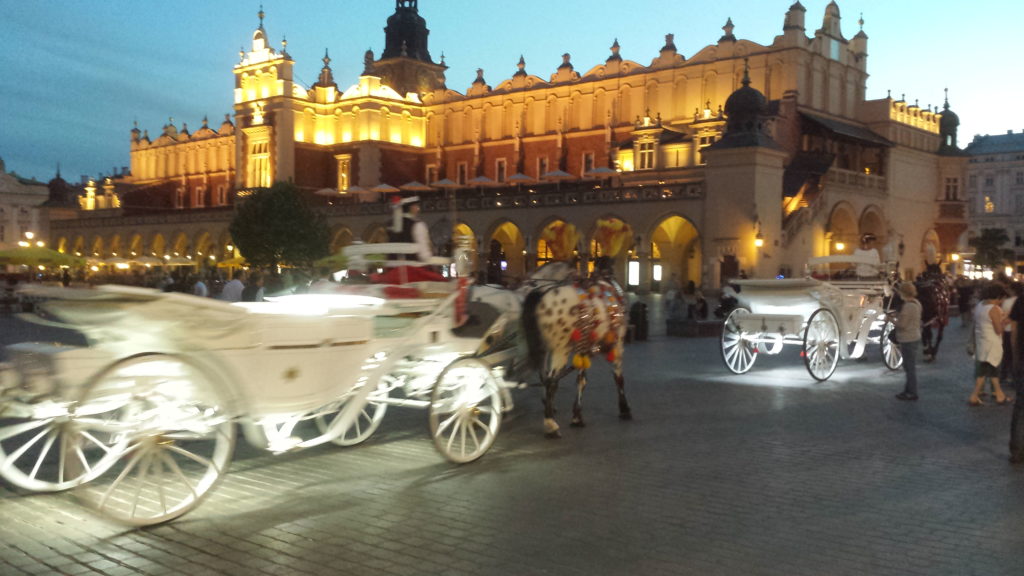
Main Market Square- Krakow New York Jewish Travel Guide
One destination that truly deserves a place on everyone’s travel itinerary is the UNESCO World Heritage-listed Auschwitz-Birkenau, a somber reminder of the atrocities of history. This former Nazi concentration camp served as a grim prison where over a million European Jews and countless other prisoners suffered confinement and death during the harrowing years of World War II.
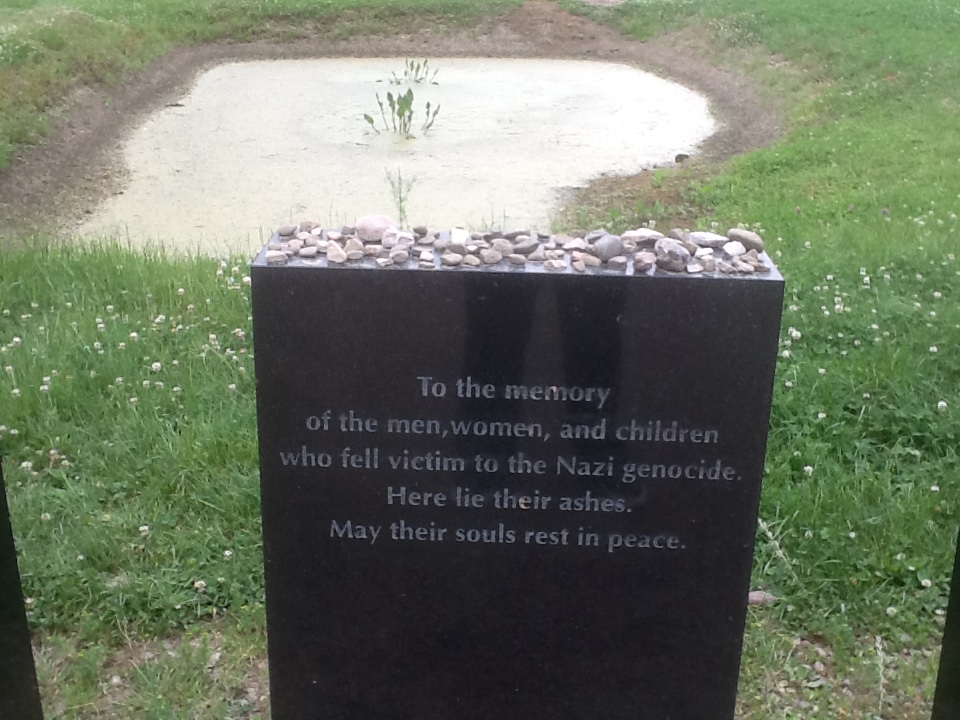
Auschwitz Concentration Camp- New York Jewish Travel Guide
My visit to Auschwitz-Birkenau was profoundly emotional and thought-provoking. As I walked through the haunting remnants of the barracks, gazed up at the chilling watchtowers, and saw the haunting railway ramps, gas chambers, and crematoriums, it was impossible not to be deeply affected. The guided tour of the museum led me through austere prison blocks, the solemn execution yard, and the sole remaining gas chamber, all bearing silent witness to the millions who perished within these walls.
At Birkenau, I encountered the iconic railway arch, a poignant symbol of the trains that brought countless unsuspecting prisoners to their tragic fate. This visit was a stark reminder of the importance of remembering history’s darkest chapters and ensuring that such horrors are never repeated.
Oskar Schindler’s Factory stands as a remarkable exhibition that not only unveils the history of Krakow during World War II but also narrates the compelling story of Oskar Schindler and the Jewish prisoners of Krakow, whose experiences inspired Steven Spielberg’s Academy Award-winning masterpiece, “Schindler’s List.” This museum, often a hidden gem, offers a profound insight into Krakow’s history during the German occupation.
The museum is an enlightening and engaging experience from start to finish. It guides you through the entire spectrum of wartime events, from the onset of World War II to its poignant conclusion, painting a vivid picture of the tragic unfolding of events. It zeroes in on life in Krakow under Nazi rule, shedding light on the horrendous living conditions and the suffering endured by the Jewish population in the Krakow ghetto.
The exhibits are meticulously detailed, and each room evokes a distinct atmosphere, with variations in flooring such as gravel and wood. The museum’s layout leads you through the build-up to the German invasion on September 1st, 1939, and the subsequent occupation, and delves into the story of Schindler’s factory, along with his other enterprises, showcasing the stories of those rescued from a grim fate.
A visit to this museum is both educational and emotionally stirring, offering a poignant glimpse into the Jewish community’s plight in Krakow during World War II. Its historical depth provides a captivating and eye-opening perspective. Above all, this museum serves as a solemn reminder of the past, honoring the memory of the victims and serving as a beacon to ensure that such horrors are never repeated.
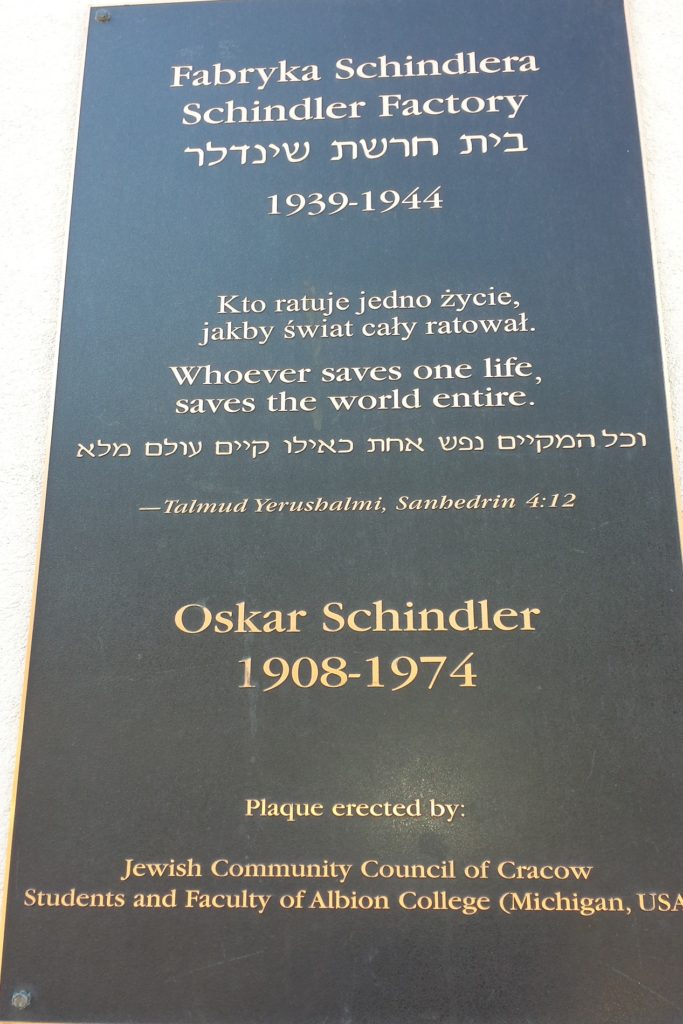
Oskar Schindler’s Factory- New York Jewish Travel Guide
The Jewish District, known as Kazimierz, located to the south of the Old Town, held the heart of Jewish life in Kraków for more than five centuries until it was tragically and systematically destroyed during World War II.
Yet, in the 1990s, as the oppressive regime crumbled and global attention was drawn to Kazimierz through the lens of Steven Spielberg, this historic district experienced a remarkable renaissance.
Today, Kazimierz is a thriving and vibrant district, brimming with a rich cultural heritage. It is home to numerous synagogues and Jewish cemeteries, serving as a testament to its historic significance. Kazimierz has evolved into Kraków’s most dynamic neighborhood, where you’ll find an array of unique and avant-garde independent shops and art galleries, as well as a vibrant nightlife scene with eclectic bars and clubs.

HAMSA Restaurant Krokow – New York Jewish Travel Guide
Consequently, this district has now evolved into a significant tourist destination and a pilgrimage site for Jews, marking the resurgence of contemporary Jewish culture in the area. Since 1988, the immensely popular Jewish Culture Festival has been a summertime tradition, filling Kazimierz’s streets and cafes with music while imparting knowledge about Kraków’s pre-war Jewish heritage and commemorating modern Jewish culture.
At the heart of it all is the former Jewish square, now known as Plac Nowy, which has transformed Kazimierz into the city’s premier hub for cafe culture and nightlife. This revitalized district is a testament to the power of cultural preservation and renewal, attracting both locals and visitors eager to explore its rich history and vibrant modern spirit.
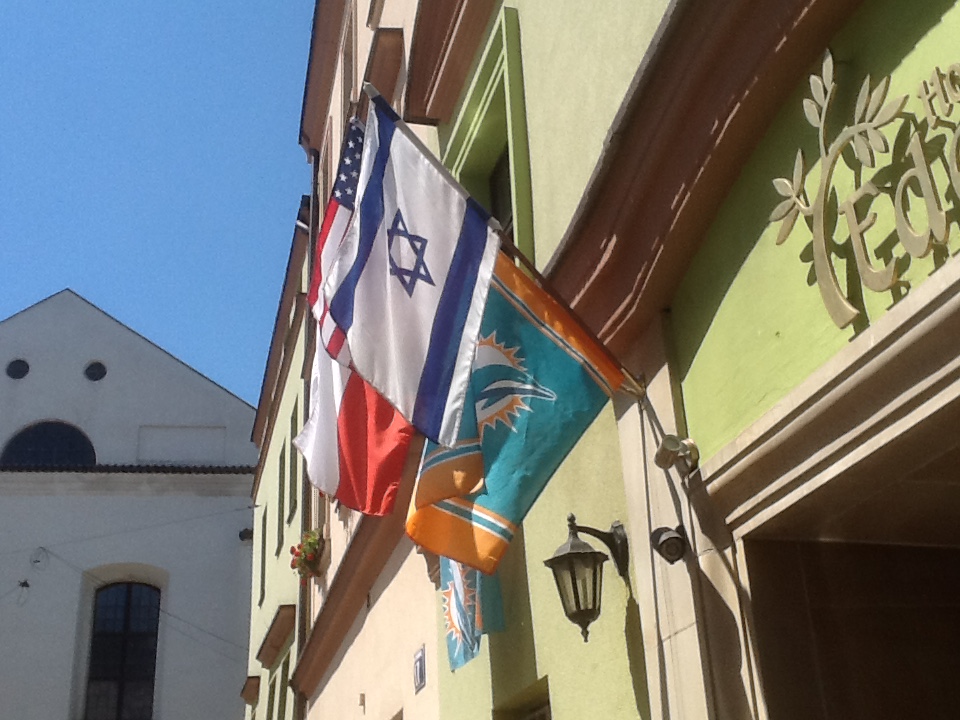
The Eden Hotel – New York Jewish Travel Guide
Within a mile’s radius, Kazimierz offers a wealth of historical and cultural treasures, including seven well-preserved synagogues, the Galicia Jewish Museum, two ancient Jewish cemeteries, and the Jewish Community Center. This district also holds special significance as several locations within it were used during the filming of “Schindler’s List,” such as the market, the square, the ghetto, the OS factory, and Chabad, which continues to host both locals and visitors for their services and Shabbat dinners.
While many of the synagogues in Kazimierz suffered destruction during World War II, and the post-war Jewish community was unable to fully restore them, their presence remains a poignant reminder of the district’s rich history.
Among these synagogues, the Isaac Synagogue stands out as a particularly intriguing and captivating site. Its design is adorned with ornate arabesques and arches while maintaining a sense of elegant simplicity within. Rabbi Eliezer Gurary, from Chabad, warmly oversees the synagogue and readily provides information to those interested. Klezmer concerts are a regular feature here. Additionally, there’s a store inside offering kosher food, sweets, Jewish calendars, and various other items. Behind the synagogue, you’ll discover Szalom Falafel and Pizza, Kraków’s sole kosher fast-food establishment, adding to the district’s unique charm and offerings.
The High Synagogue features an intriguing bookstore downstairs, while the Old Synagogue serves as a captivating museum showcasing Jewish life.
The Popper Synagogue, once among Kazimierz’s grandest places of worship, has a remarkable history. Although it lost its original furnishings and murals during the war, it has been repurposed into a cultural center and art studio for community programs, retaining its stunning exterior.
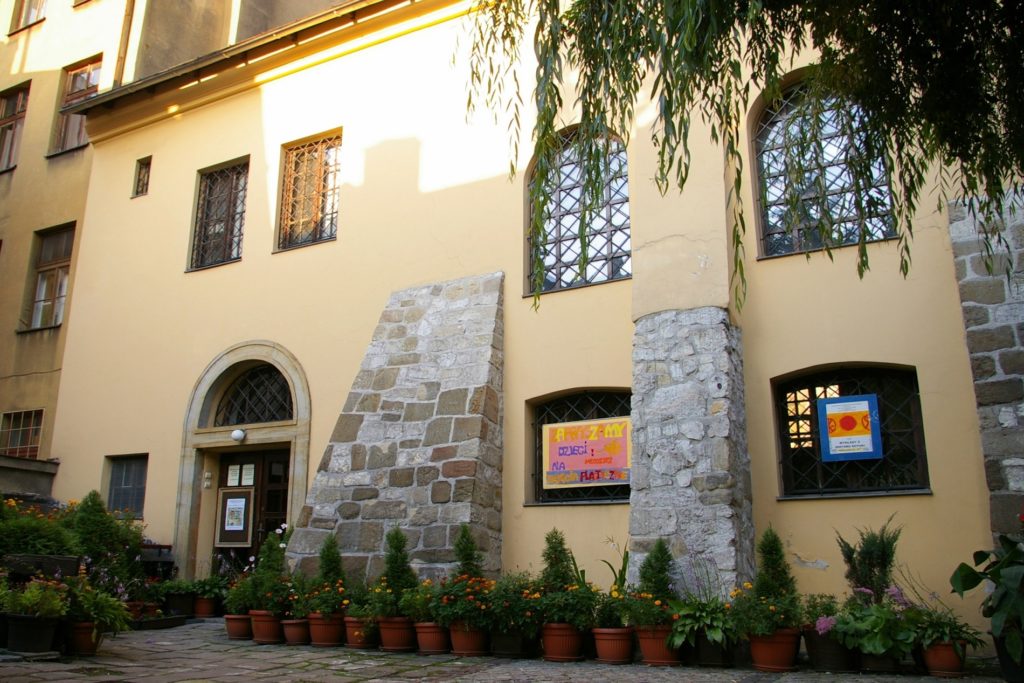
The Popper Synagogue- New York Jewish Travel Guide
Located just behind the Remuh Synagogue, this cemetery has deep historical roots.
In active use until 1800, this sacred burial ground suffered severe damage during the Nazi occupation, with only a dozen tombstones surviving in their original condition. Notably, among these was the tombstone of Rabbi Moses Isserles, a phenomenon some interpreted as evidence of his miraculous influence.
Today, the cemetery and its accompanying synagogue stand as significant pilgrimage destinations for devout Jews from around the world. The synagogue’s interior, while modestly adorned, features a reconstructed bimah (a raised platform) and meticulously restored ceiling motifs, preserving the site’s historical and spiritual significance.
The Temple Synagogue stands as another precious gem in the heart of the Jewish district. Kazimierz’s newest synagogue traces its roots back to 1862, with subsequent expansions, including the most recent one in 1924. During the dark days of the Nazi occupation, this building was repurposed as a warehouse and stable. Astonishingly, it emerged from the war largely intact, and regular services even continued here until 1968, although they ceased entirely a decade later.
Since its restoration, the synagogue’s interior, adorned with gilded woodwork, has become a venue for numerous concerts and occasional religious ceremonies, especially during the annual Jewish Festival of Culture. It stands as a testament to resilience and renewal in the face of historical adversity, contributing to the rich tapestry of Kazimierz’s cultural heritage.
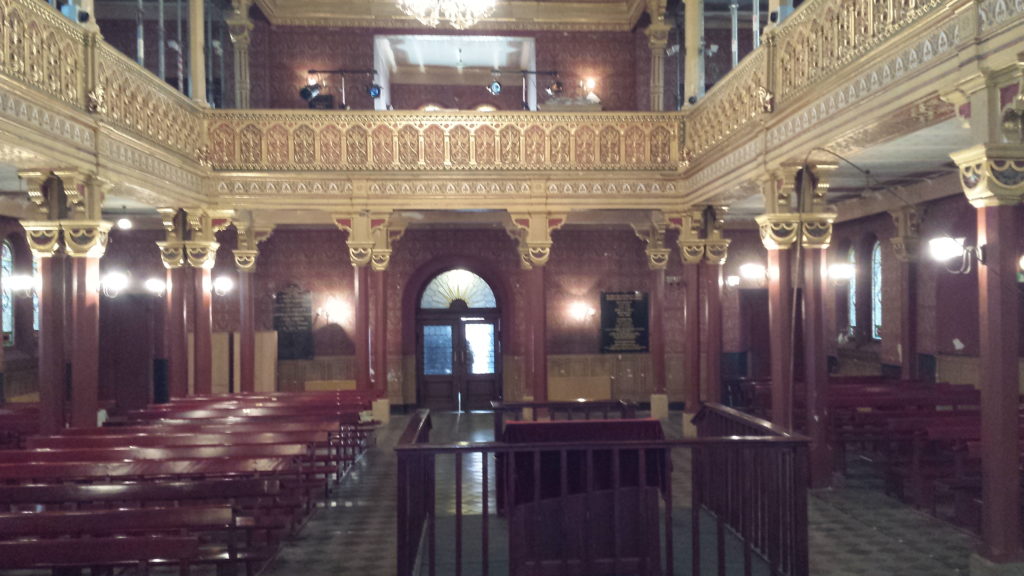
Temple Synagogue- Krakow- New York Jewish Travel Guide
I had the privilege of meeting Jonathan Ornstein, the director of the Jewish Community Center. This center serves as the focal point for Kraków’s enduring Jewish community, actively strengthening it through a diverse calendar of events, lectures, exhibitions, and tours each year. Beyond its role as a community hub, it offers an approachable and enlightening starting point for those interested in exploring Kraków’s Jewish community, providing information on events like Shabbat dinners and much more. The center warmly welcomes walk-ins to discover the wealth of experiences it has to offer. You can read my full interview with Jonathan at https://rawrland.space/2017/07/27/krakows-jewish-community-center-a-portal-for-polands-re-emerging-jewish-community/
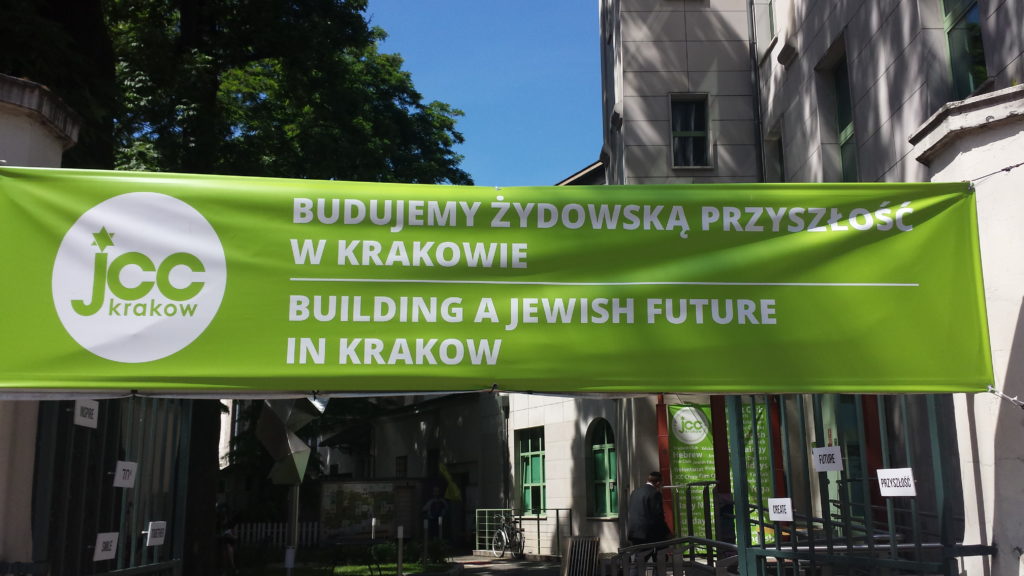
JCC- Krakow – New York Jewish Travel Guide
The New Jewish Cemetery is a breathtaking and deeply moving place. Established in 1800, it served as the final resting place for numerous distinguished Jews from Kraków during the 19th and early 20th centuries. Surprisingly, despite being established more recently in the early 19th century, the New Cemetery has an aura of greater antiquity compared to the older Jewish cemetery.
Here, you’ll encounter the graves of many renowned Jews from Krakow, marked by tombstones that span different eras. Some bear the scars of time, fractured and worn, with missing descriptions and dates for those who perished during the Nazi occupation. Tragically, the Nazis removed and desecrated many tombstones, repurposing them or breaking them into pieces. After the war, some were returned to their original places, while others could not be recovered. These remnants were placed on the cemetery walls and used to construct the Holocaust memorial at the entrance.
In total, the cemetery houses over 10,000 tombs, with the oldest dating back to 1809. Throughout the grounds, you’ll find numerous monuments honoring the memory of Jews who perished during the Holocaust, serving as a poignant reminder of the tragic history that unfolded here.
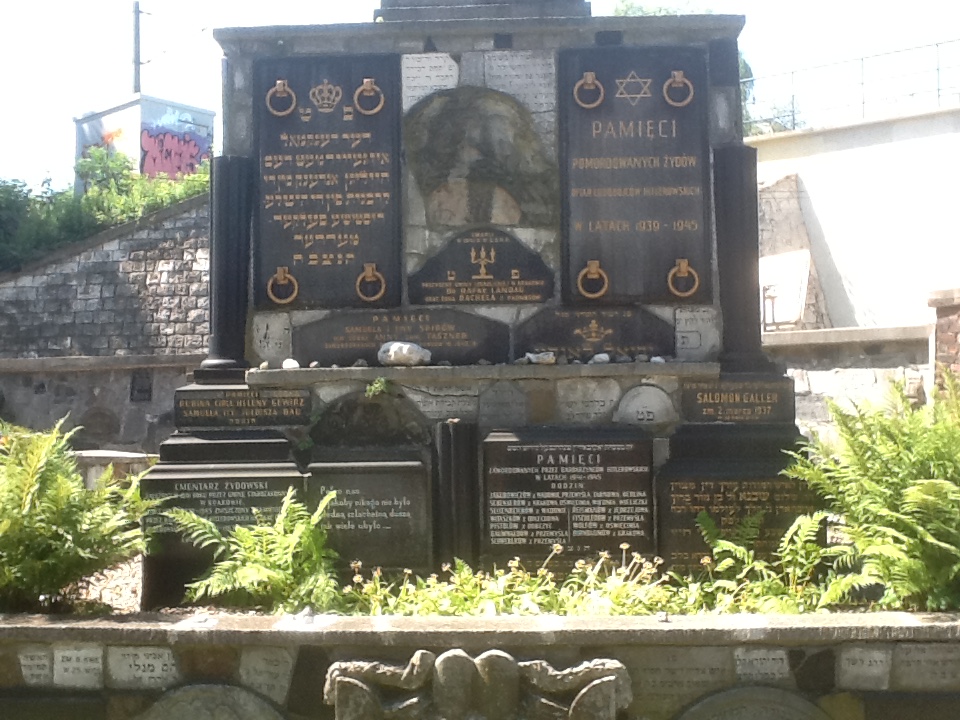
New Jewish Cemetery -Krakow- New York Jewish Travel Guide
“Exploring Krakow: Must-Visit Attractions”
Wawel Castle is an absolute must-see, firmly ensconced on my list of Krakow’s treasures. It proudly bears the title of a UNESCO World Heritage Site, forming an integral part of the Historic Center of Kraków. A visit to Wawel Castle is akin to stepping back in time to an era frozen in its splendor.
The craftsmanship on display here is nothing short of extraordinary, with architectural details that leave you in awe.
Remarkably, the castle has not undergone a process of “restoration”; rather, it has been meticulously “preserved” for centuries. It stands as one of the few areas that remained unscathed during the tumultuous battles of World War II.
Wawel Castle’s sheer size is staggering, offering a captivating journey through architectural styles spanning the medieval, Renaissance, and Baroque periods. The magnificent arcade courtyard is a true marvel, both in its grand layout and its generously lit interiors, beckoning you to explore its historic corridors.
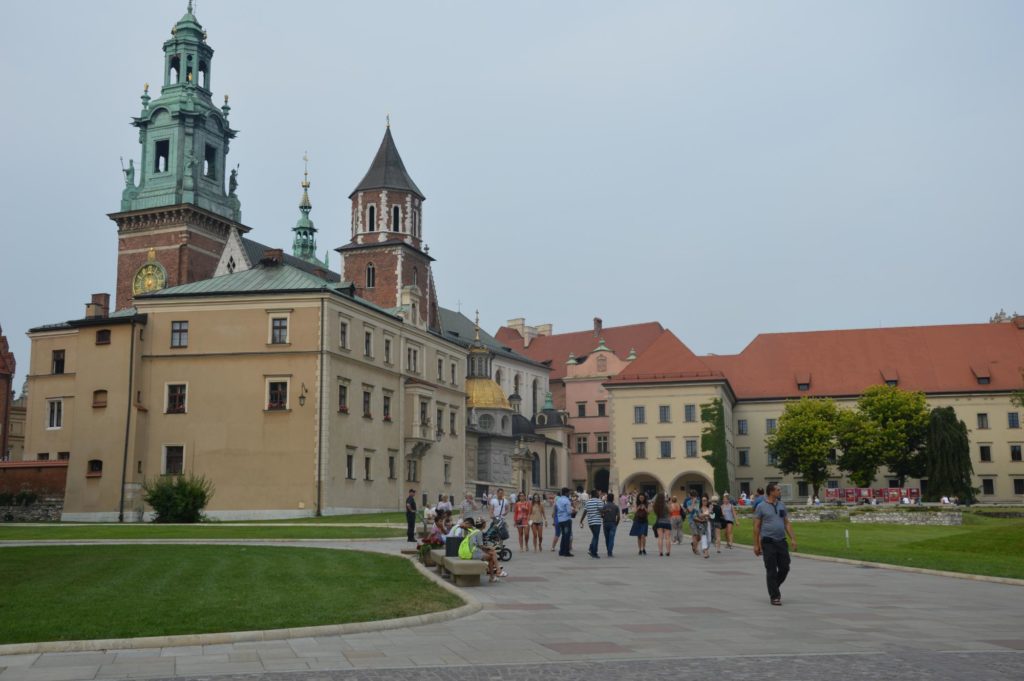
Wawel Royal Castle – New York Jewish Travel Guide
Cheder Cafe and Cultural Center is a charming establishment housed in a former prayer house, adjacent to another historic prayer house. This cafe offers an Israeli or Middle Eastern ambiance, with eclectic seating and a spacious interior. It also serves as a cultural hub, hosting lectures, film screenings, concerts, and other events promoting Judaism. One of its standout features is an in-house library stocked with Jewish-related books, including many in English.
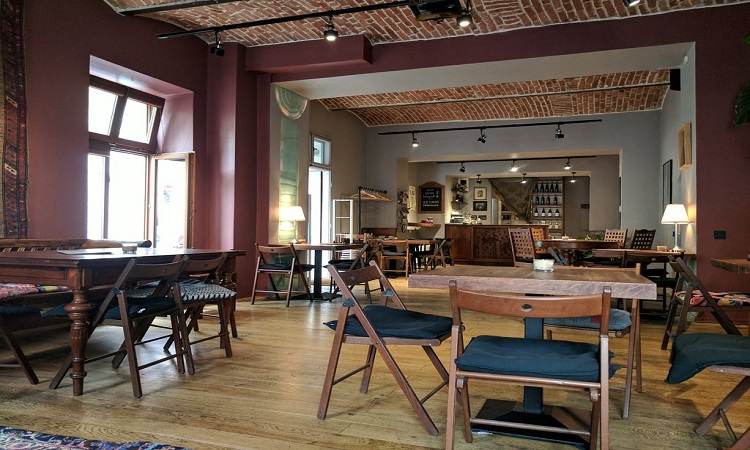
Cheder Cafe- New York Jewish Travel Guide
The Wieliczka Salt Mine is an absolute marvel, leaving a profound and stunning impression. This remarkable site ranks among Poland’s most cherished and captivating monuments. In fact, the first tourist trail within the Wieliczka Salt Mine was established as far back as the early 19th century. Fast forward a couple of centuries, and this salt mine earned its well-deserved place as one of UNESCO’s World Heritage Sites in 1978.
My visit to the mine left me in awe of its sheer size and scale. I had never anticipated encountering such a vast underground world filled with intricate carvings, artwork, statues, and even chandeliers, all located over 130 meters below ground level. This salt mine stands as one of the most remarkable medieval constructions in European history, serving as a significant source of income for the Polish monarchy for many centuries. It also played a pivotal role in folk art, with salt-carved figures, entire theaters, and chapels adorning its underground chambers. The Wieliczka Salt Mine is, without a doubt, an awe-inspiring testament to human creativity and ingenuity.
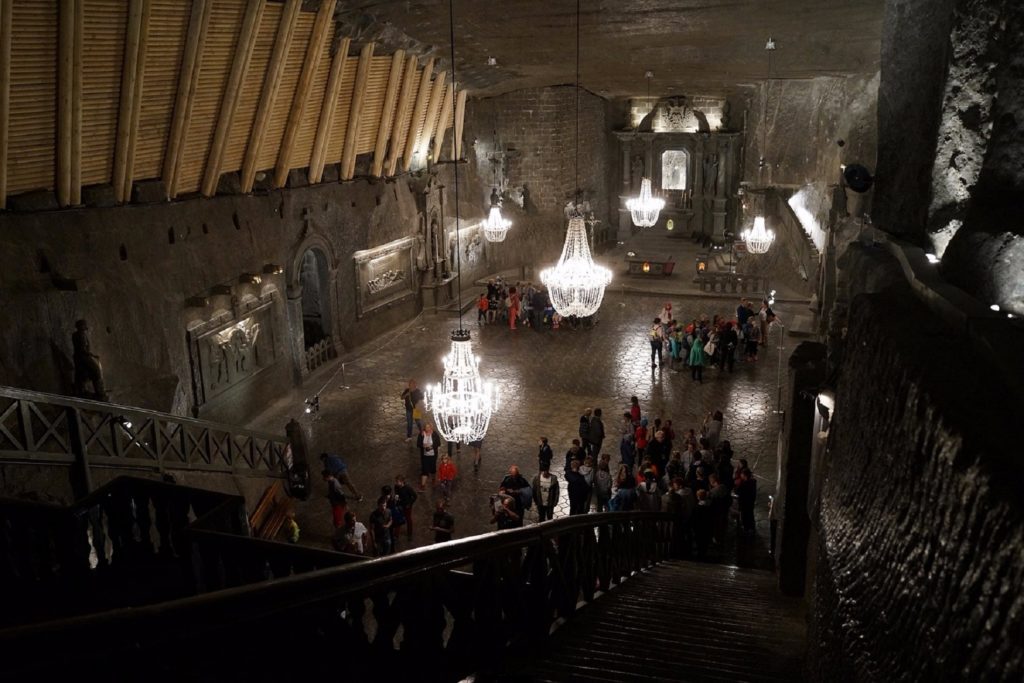
Wieliczka Salt Mine – New York Jewish Travel Guide
For more information, visit:
To plan a trip to Poland, contact the Polish National Tourist Office North America or log on to:
https://www.poland.travel/en http://www.mot.krakow.pl/ and www.krakow.pl
Story and photography by Meyer Harroch, New York Jewish Travel Guide, and New York Jewish Guide



You must be logged in to post a comment Login